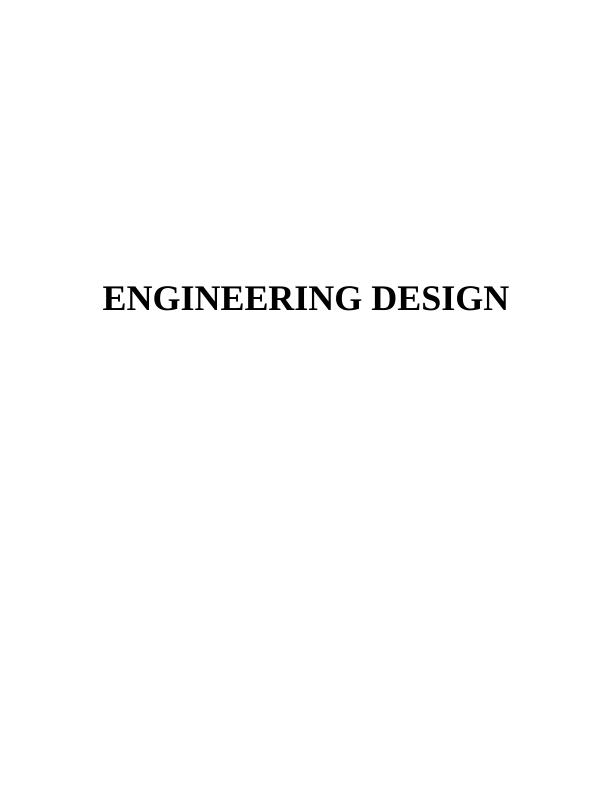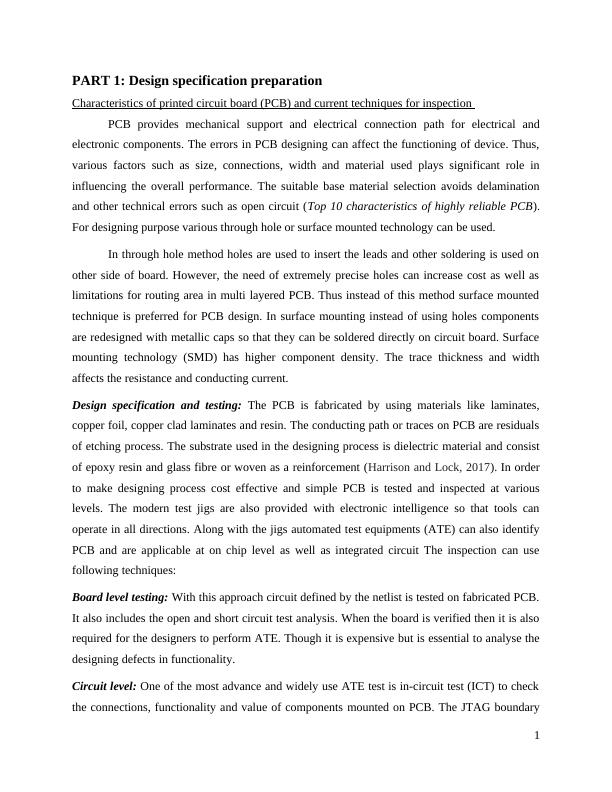Engineering Design: Assignment
9 Pages1982 Words192 Views
Added on 2021-01-01
Engineering Design: Assignment
Added on 2021-01-01
ShareRelated Documents
ENGINEERING DESIGN

TABLE OF CONTENTSPART 1: Design specification preparation .....................................................................................1Characteristics of printed circuit board (PCB) and current techniques for inspection ...............1Impact of stakeholders on design brief ......................................................................................2Critical path analysis (CPA) in project management .................................................................2Potential planning techniques ....................................................................................................3REFERENCES ...............................................................................................................................6

PART 1: Design specification preparation Characteristics of printed circuit board (PCB) and current techniques for inspection PCB provides mechanical support and electrical connection path for electrical andelectronic components. The errors in PCB designing can affect the functioning of device. Thus,various factors such as size, connections, width and material used plays significant role ininfluencing the overall performance. The suitable base material selection avoids delaminationand other technical errors such as open circuit (Top 10 characteristics of highly reliable PCB).For designing purpose various through hole or surface mounted technology can be used. In through hole method holes are used to insert the leads and other soldering is used onother side of board. However, the need of extremely precise holes can increase cost as well aslimitations for routing area in multi layered PCB. Thus instead of this method surface mountedtechnique is preferred for PCB design. In surface mounting instead of using holes componentsare redesigned with metallic caps so that they can be soldered directly on circuit board. Surfacemounting technology (SMD) has higher component density. The trace thickness and widthaffects the resistance and conducting current. Design specification and testing: The PCB is fabricated by using materials like laminates,copper foil, copper clad laminates and resin. The conducting path or traces on PCB are residualsof etching process. The substrate used in the designing process is dielectric material and consistof epoxy resin and glass fibre or woven as a reinforcement (Harrison and Lock, 2017). In orderto make designing process cost effective and simple PCB is tested and inspected at variouslevels. The modern test jigs are also provided with electronic intelligence so that tools canoperate in all directions. Along with the jigs automated test equipments (ATE) can also identifyPCB and are applicable at on chip level as well as integrated circuit The inspection can usefollowing techniques: Board level testing: With this approach circuit defined by the netlist is tested on fabricated PCB.It also includes the open and short circuit test analysis. When the board is verified then it is alsorequired for the designers to perform ATE. Though it is expensive but is essential to analyse thedesigning defects in functionality. Circuit level: One of the most advance and widely use ATE test is in-circuit test (ICT) to checkthe connections, functionality and value of components mounted on PCB. The JTAG boundary1

End of preview
Want to access all the pages? Upload your documents or become a member.
Related Documents
Research Project Communication: Tools, Techniques, Methodologies, and Strategieslg...
|8
|2080
|219
Engineering Design Assignment - Deskliblg...
|7
|1001
|255
Applications of Microtronic’s New Eagleview Macro Defect Inspection System and its technologylg...
|5
|651
|437
